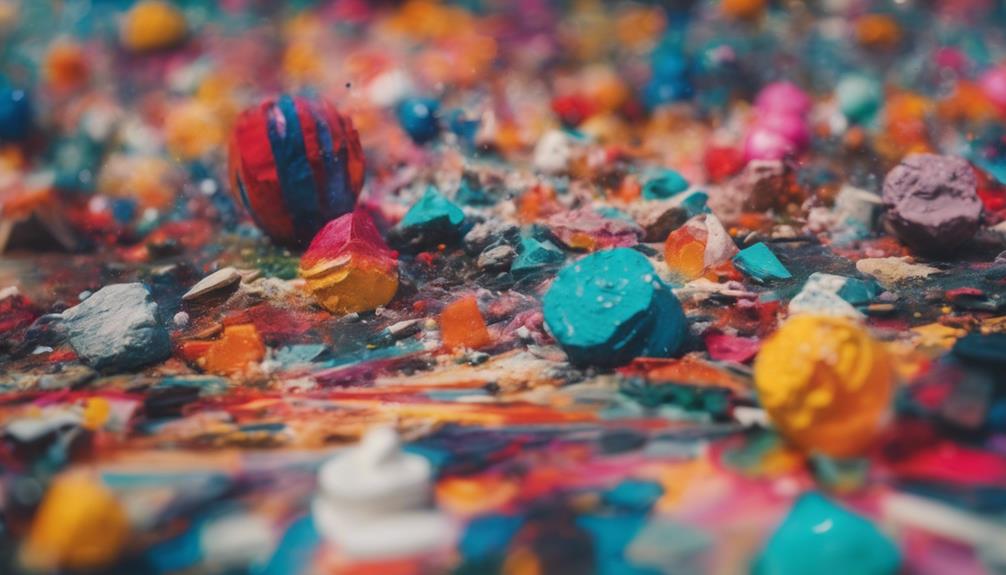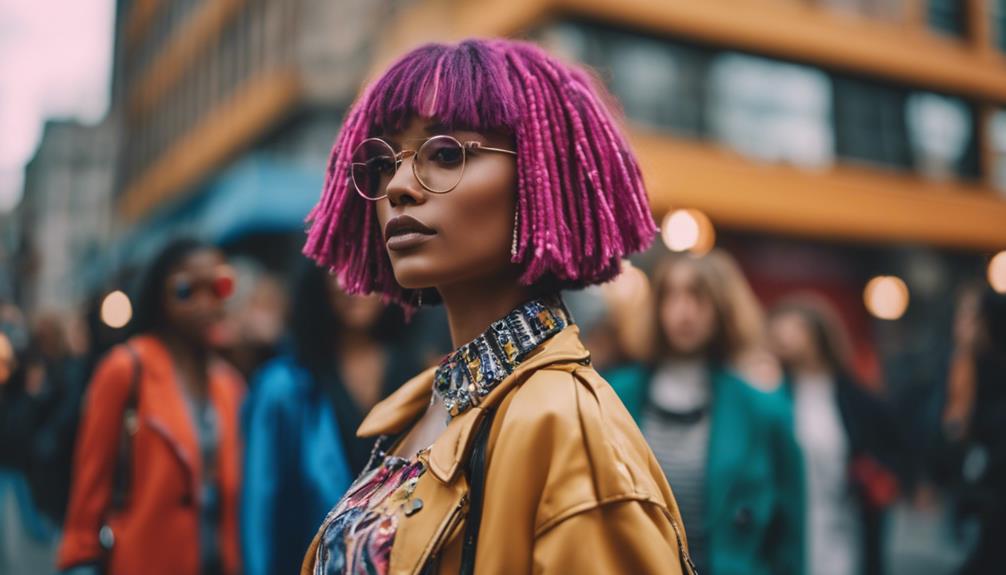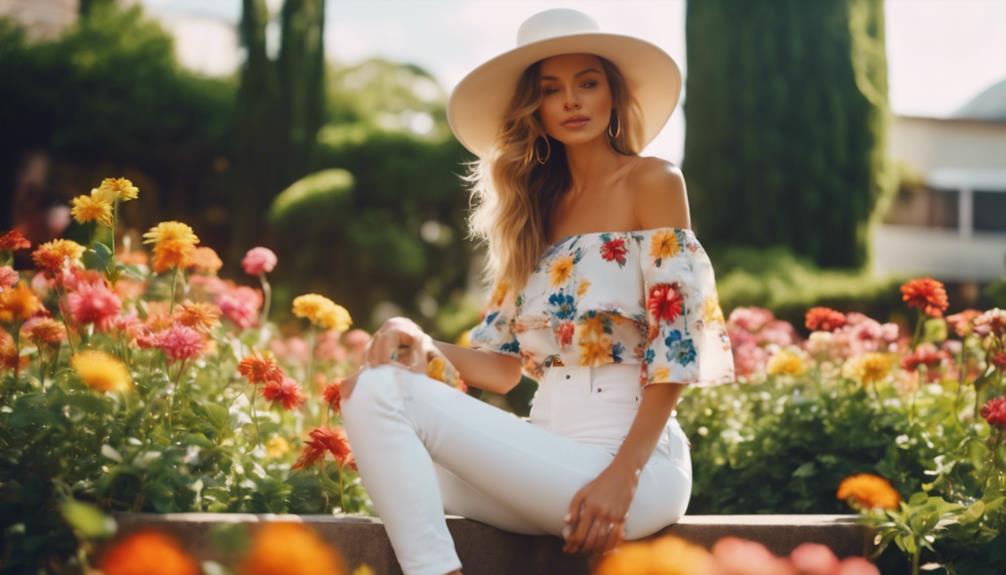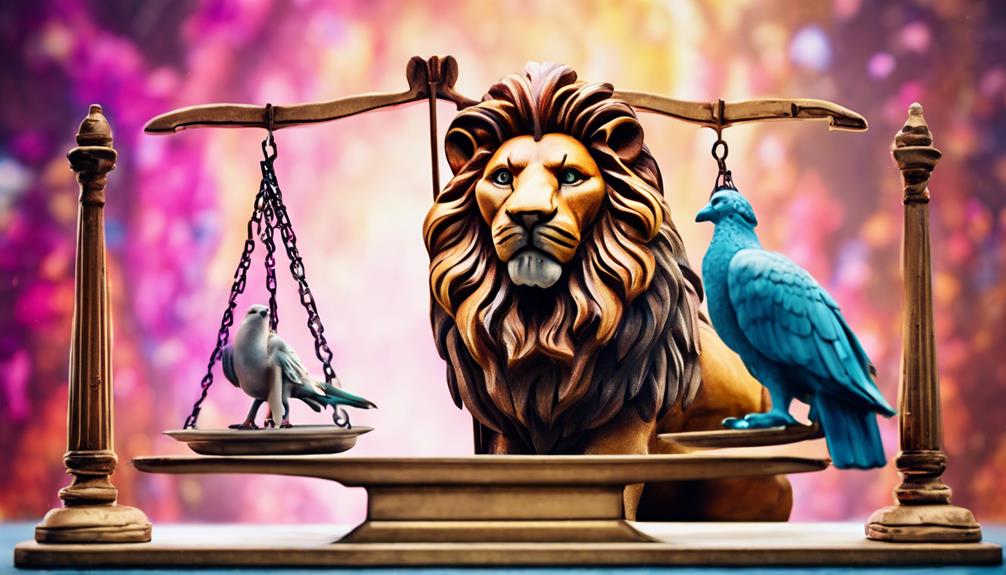Your artistic identity is molded by the styles you adopt and the art you produce. Each style represents your personal story and influences how you convey emotions and experiences. By trying out different techniques, you reveal your unique voice. Whether you prefer realism or abstraction, both provide an opportunity to boost your creativity and connect with your audience. Engaging with a variety of styles not only enhances your skills but also enriches your artistic journey. If you delve deeper, you may uncover how these elements come together to define your genuine creative self.
Key Takeaways
- Artistic style is a unique expression shaped by personal vision, color, technique, and subject matter, reflecting identity and evolving through experimentation.
- Exploring historical styles like Impressionism or Cubism can enhance creativity and reveal unique techniques in your own work.
- Finding your unique voice involves experimentation with techniques, maintaining an art journal, and seeking feedback from others to refine your style.
- Audience perception influences artistic identity; engaging with your audience can help shape and redefine your creative expression over time.
Understanding Artistic Style
Artistic style is your unique expression shaped by elements like color, technique, and subject matter. This art style reflects your personal vision and can evolve as you experiment and practice. As you explore different techniques, you'll likely find aspects that resonate with you, helping you refine your unique style.
Understanding various artistic styles, such as Impressionism or Cubism, can be incredibly beneficial. By studying these movements, you gain insights into how other artists convey their messages, which can inspire your creative process. Engaging with different art forms and observing admired artists allows you to borrow ideas and techniques, which you can then adapt to form your own distinct expression.
A consistent artistic style not only enhances your recognition in the art world but also boosts your marketability. It helps you establish a brand that sets you apart from others.
As you navigate through your creative journey, remember that your art style is an evolving reflection of who you are. Embrace the process, keep experimenting, and don't hesitate to draw inspiration from the rich tapestry of artistic history. Your unique style will emerge, making your work truly your own.
The Role of Creative Expression
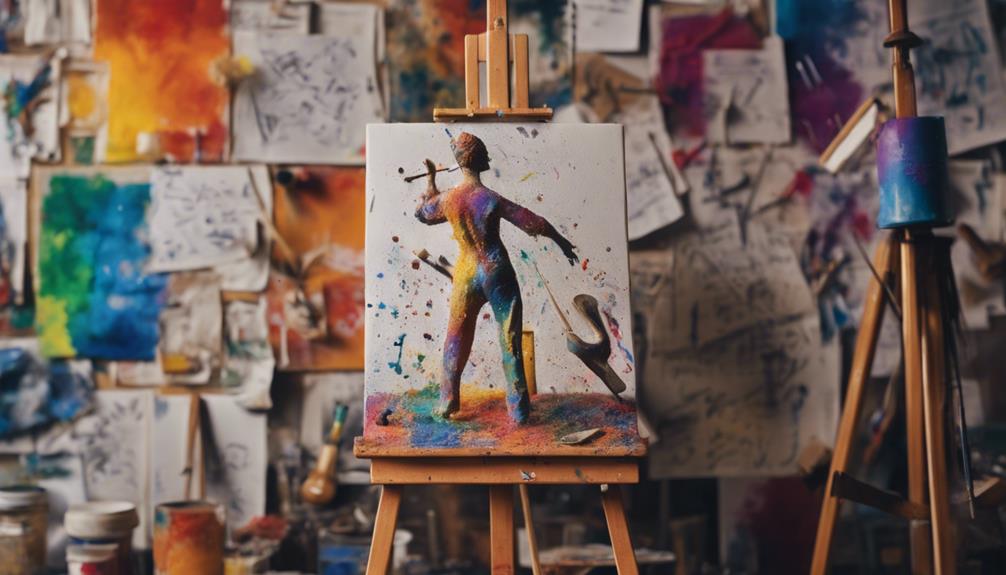
Creative expression acts as a powerful channel for you to convey emotions and experiences that words often can't capture. Whether through art, music, or writing, engaging in creative activities allows you to communicate complex feelings and thoughts. This process not only reduces stress but also enhances your overall well-being by promoting mindfulness and focus.
Here are some ways creative expression benefits you:
- Improves mental health by providing an outlet for stress relief.
- Boosts problem-solving skills as you explore various styles and perspectives.
- Enhances self-esteem through a sense of ownership in your artistic achievements.
- Encourages innovation by pushing you to think outside the box.
Exploring Different Art Styles
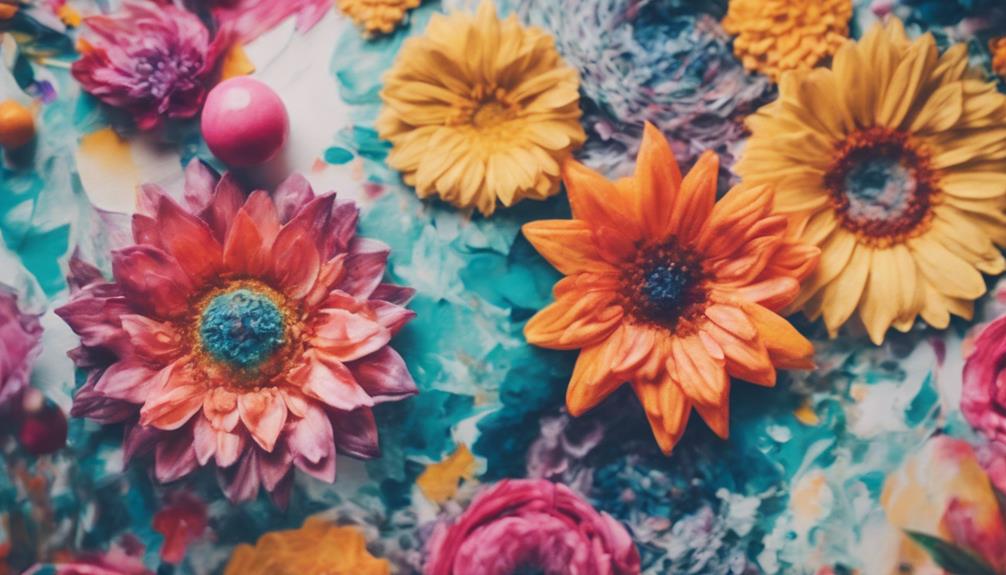
Exploring different art styles reveals the unique techniques and emotional depth that define artists' expressions. Each artistic style offers distinct features, such as specific techniques, color palettes, and thematic concerns, that contribute to an artist's overall message. For example, Impressionism captures fleeting moments of light and movement, while Abstract art emphasizes color and form over representational accuracy.
As you investigate various artistic styles, you might notice the spectrum from photorealism to abstraction. This continuum showcases the range of possibilities in art, allowing you to appreciate how different definitions can shape the viewer's experience. An artist's style often evolves due to personal experiences, cultural influences, and engagement with diverse artistic communities.
Understanding these various artistic styles is essential not just for appreciation but also for refining your own creative expression. By exploring and learning about these styles, you can enhance your ability to communicate your thoughts and emotions through your work. For example, studying the intricacies of impressionism can help you capture the play of light and color in your landscapes, while delving into the techniques of surrealism can inspire you to create dreamlike images that delve into the subconscious. By understanding the principles of these styles, you can incorporate their elements into your own work, creating a rich tapestry of influences that reflect your unique artistic vision. Just as a painter layers colors on a canvas, you can layer different artistic styles and techniques to create a masterpiece of cozy layers for winter. In addition to enhancing your own creative expression, understanding artistic styles can also open up opportunities for collaboration and innovation. By being knowledgeable about different styles, you can more effectively communicate and collaborate with other artists, each bringing their own unique perspective to the table. Furthermore, this knowledge can also inspire you to think outside the box and come up with innovative ways to combine and redefine different artistic styles, leading to new and exciting forms of expression. Just as a painter layers colors on a canvas, you can layer different artistic styles and techniques to create a masterpiece of creative bookshelf display ideas.
Ultimately, this exploration of artistic styles empowers you to discover the techniques and expressions that resonate with you, setting the stage for your unique artistic journey.
Finding Your Unique Voice
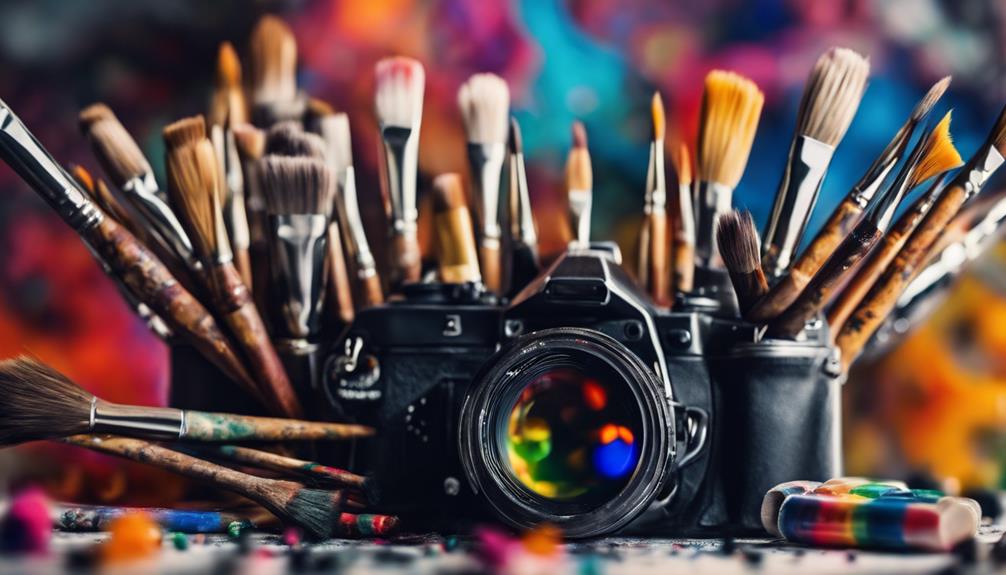
Discovering your unique voice in art requires a willingness to experiment with different techniques and mediums that resonate with your personal experiences and emotions.
Embrace the journey of exploration, as it's the key to finding your unique artistic voice.
Here are some strategies to help you on this path:
- Keep an art journal: Document your thoughts, ideas, and progress to uncover recurring themes in your work.
- Seek feedback: Share your art with peers and mentors for insights that can help refine your style.
- Study admired artists: Analyze the work of artists you love to understand their different styles and techniques, which can inspire your own creativity.
- Practice regularly: Consistent effort in creating art strengthens your skills and boosts your confidence in expressing yourself.
The Impact of Audience Perception
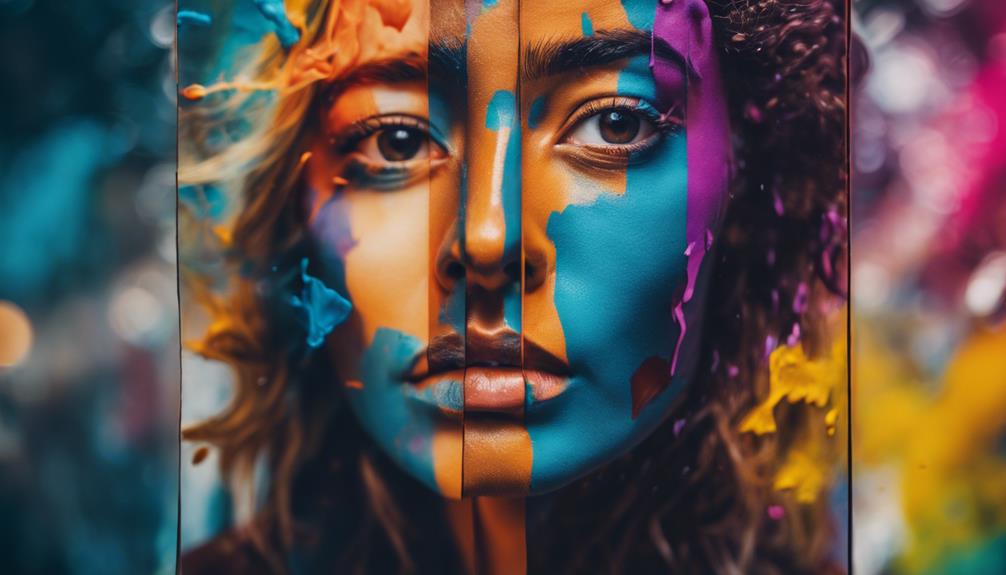
Audience expectations can greatly influence your artistic style, shaping how you create and present your work.
When viewers engage with your art, their perceptions help define your identity as an artist, guiding your evolution.
Understanding this dynamic allows you to adapt and refine your style in response to the feedback and connections you build with your audience.
Audience Expectations Influence Style
When artists align their styles with audience expectations, they not only enhance their marketability but also strengthen the connection with their followers. Understanding what your audience anticipates can help you craft an artistic style that resonates deeply. If you don't meet those expectations, you risk losing engagement and loyalty.
Here are some key points to reflect on:
- Consistency is key: A defined style makes it easier for your audience to recognize and connect with your work.
- Feedback matters: Engage with your followers to gather insights on their preferences and adjust your style accordingly.
- Broaden your appeal: While diversifying styles can attract new fans, it might alienate those who cherish your original aesthetic.
- Quality over quantity: Always prioritize maintaining the quality of your work to foster trust among your audience.
Perception Shapes Artistic Identity
Perception considerably shapes an artist's identity, as viewers often interpret their work through the lens of personal experiences and cultural backgrounds. This means your artistic identity can shift based on how your audience perceives your work.
| Audience Perception | Impact on Artistic Identity |
|---|---|
| Interpretation through experiences | Can lead to varied meanings of your work |
| Cultural backgrounds | Influences how your style is received |
| Feedback from viewers | May prompt you to adapt your creative direction |
| External validation | Shapes the market perception of your art |
When you create art, you might have a specific vision, but your audience's interpretation often diverges from your intent. This potential mismatch can greatly influence your artistic choices. Engaging with your audience, especially through social media, allows you to harness their feedback, helping you refine your identity. Ultimately, the perception of your work not only affects how others see you but can redefine your entire artistic identity. So, remain open to these influences, and consider how your audience's perspectives can enrich your creative journey.
Embracing Experimentation in Art
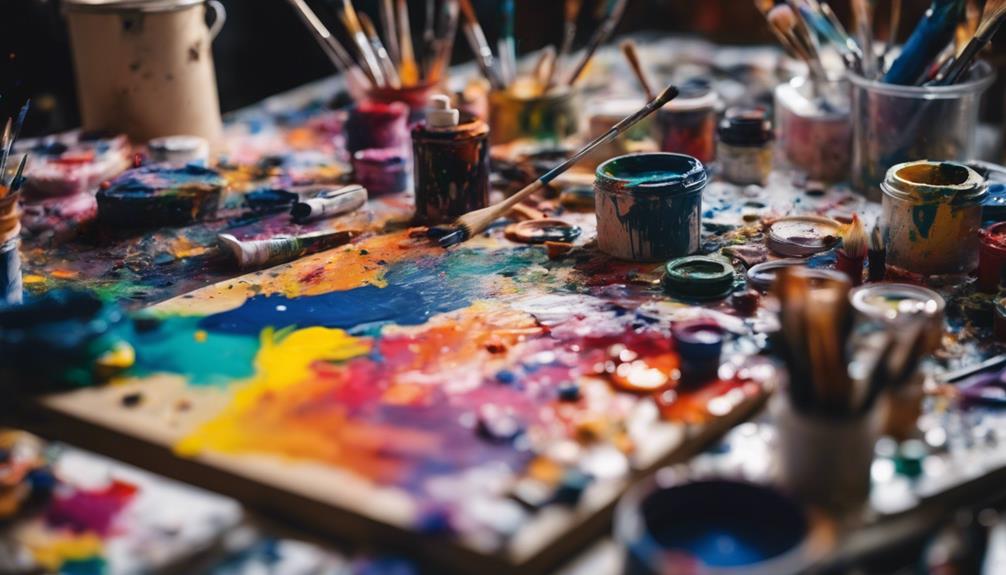
Embracing experimentation in art opens up a world of possibilities, allowing you to discover new techniques and mediums that can lead to unexpected breakthroughs. By stepping outside your comfort zone, you can enhance your versatility and find new dimensions in your artistic styles. Keeping a list of mediums and styles you want to explore can guide your journey, making it easier to plunge into new projects.
- Try mixing different mediums, like watercolor and ink, for unique textures.
- Attend workshops to learn about unfamiliar styles and techniques.
- Set aside time for playful doodling without the pressure of perfection.
- Collaborate with other artists to gain fresh perspectives and inspiration.
When you approach experimentation with an open mind, you'll reduce self-judgment, making it easier to try new ideas. Regularly experimenting not only contributes to your artistic growth, but it also keeps your creative process dynamic and inspiring.
Balancing Quality and Style
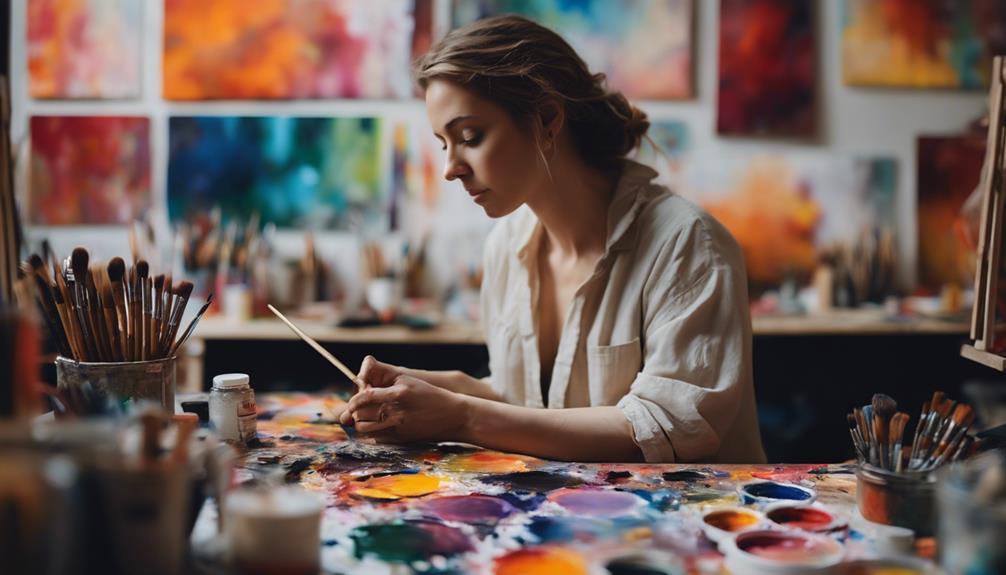
When you create art, balancing quality and style is key to your success.
While you might enjoy experimenting with different styles, maintaining a high standard in your work helps build trust with your audience.
Striking this balance not only showcases your versatility but also keeps your followers engaged and satisfied.
Consistency in Artistic Quality
Maintaining consistency in artistic quality is essential for earning your audience's trust and guaranteeing they appreciate your diverse styles. When you deliver quality work, regardless of the style you choose, you build a loyal following that values your creativity.
Here's how you can balance quality and style effectively:
- Set high standards: Always aim for excellence in your work, no matter the artistic approach.
- Practice regularly: The more you create, the better you'll get at maintaining quality across different styles.
- Experiment wisely: Try new techniques and mediums, but guarantee they align with your established quality.
- Seek feedback: Engage with your audience to discover what they appreciate in your work, and use that insight to maintain your standards.
Evolving Personal Artistic Style
Evolving your personal artistic style requires a delicate balance between experimentation and a steadfast commitment to quality. As you explore different kinds of art, you'll discover that trying out various techniques and mediums fosters your creativity and individual expression.
Embracing this evolution is essential, but remember that maintaining high standards of quality across your work is equally important. This will help guarantee your audience remains engaged and trusts your artistic vision.
Regular practice and reflection on your past pieces can shed light on consistent themes and strengths, guiding the way your unique style develops over time. Engaging with diverse artistic communities offers you valuable feedback and inspiration, encouraging you to push your boundaries and explore new styles.
While your artistic style may shift as you grow, your dedication to producing high-quality work should remain constant. Balancing quality and evolving style isn't always easy, but it's necessary for building a strong foundation in your artistry.
Frequently Asked Questions
What Is Creative Art Style?
A creative art style's your unique expression, shaped by colors, techniques, and themes. It evolves as you practice, experiment, and draw inspiration from experiences. Embracing your style helps you connect with others and grow artistically.
How Do You Define Style in Art?
You can define style in art by envisioning a fingerprint—distinct and personal. It's the unique blend of techniques, themes, and emotions that you express, evolving through your experiences and experimentation, shaping your creative identity.
How Do You Describe Your Style of Art?
You describe your style of art as a vibrant mix of colors and bold techniques. You embrace experimentation, letting your experiences shape your work, and you value feedback to enhance your creative expression.
How to Find Your Style as a Creative?
To find your style as a creative, experiment with different techniques, keep an art journal, seek feedback, engage with communities, and practice regularly. Over time, these efforts will help you discover your unique voice.
Conclusion
In the grand tapestry of creativity, your style is the blazing sun that outshines the stars.
It's not just a feature; it's the very heartbeat of your artistic soul!
Embrace your unique voice, let it echo through every brushstroke and note you create.
Remember, every masterpiece is a daring leap into the unknown, where experimentation reigns supreme.
So, dance boldly with your art, for it's your style that defines you—an unstoppable force in the universe of creativity!
